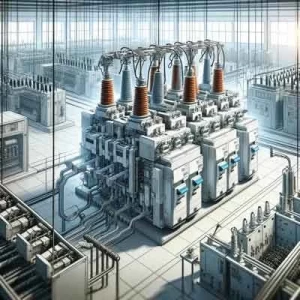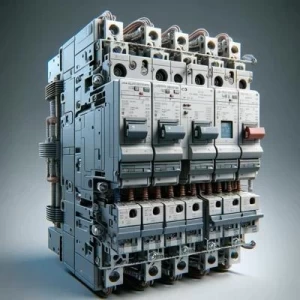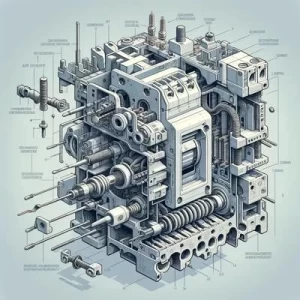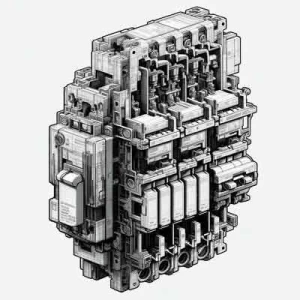Advantages & Disadvantages of Air Blast Circuit Breakers

Air Blast Circuit Breakers (ABCBs) represent a significant advancement in the technology of interrupting high-voltage circuits. Utilizing a blast of air to cool and extinguish the arc that forms when interrupting a current, these devices have been integral in improving electrical systems' safety, reliability, and efficiency. Like any technological solution, however, they come with their own set of advantages and disadvantages. This article delves into these aspects, providing a comprehensive understanding of Air Blast Circuit Breakers.
Advantages of Air Blast Circuit Breakers
Suitable for Frequent Operation
One of the standout features of ABCBs is their suitability for applications that require frequent operation. The design of these breakers ensures that the arc energy is significantly lower compared to other types of circuit breakers, which minimizes wear and tear on the device, enhancing its longevity even in conditions of frequent use.
Eliminates Fire Risk
Unlike oil circuit breakers, ABCBs do not use oil as an arc extinguishing medium. This eliminates the risk of fire, making ABCBs safer, especially in environments where the risk of fire needs to be minimized. This feature is particularly beneficial in densely populated or environmentally sensitive areas.
Compact Size
The rapid growth of dielectric strength in air blast circuit breakers allows them to be more compact than their counterparts. This compactness is advantageous in settings where space is at a premium, allowing for more efficient use of space in electrical installations.
Faster Arc Quenching
The mechanism of air blasting in these circuit breakers results in faster arc quenching and a shorter duration of the arc. This rapid action reduces the thermal and mechanical stress on the system, contributing to the overall health of the electrical network.
Stable Operation and High-Speed Switching
ABCBs are known for their stable operation and the capability for high-speed switching. This feature is particularly important in applications where quick response times are critical, such as in power transmission and distribution networks.
Reduced Maintenance
Compared to other types of circuit breakers, ABCBs require less maintenance. This is largely due to their design, which reduces mechanical wear and tear and eliminates the need for oil replacement and disposal.
Disadvantages of Air Blast Circuit Breakers
Additional Air Supplier Plant
A notable disadvantage of ABCBs is the requirement for an additional air supplier plant. This plant is necessary to generate and supply the high-pressure air used for arc quenching, which can increase the initial setup cost and complexity.
Risk of Air Pressure Leakage
The use of high-pressure air systems introduces the possibility of air pressure leakage from air pipe junctions. Such leakages can affect the efficiency of the breaker and may require regular inspection and maintenance to mitigate.
Higher Rate Rise of Re-striking Voltage
ABCBs can have a higher rate rise of re-striking voltage and current chopping. This can potentially lead to overvoltages in the system, requiring additional protective measures to prevent damage to the electrical network and connected equipment.
Lower Arc Extinguishing Properties
Compared to other mediums like SF6, air has relatively lower arc extinguishing properties. This can make ABCBs less efficient in certain high-voltage applications, where the extinguishing of the arc needs to be as efficient as possible.
Air Blast Circuit Breakers offer a range of advantages that make them suitable for various applications, particularly where safety, space, and operational frequency are concerns. However, the disadvantages, such as the need for an additional air supply system and the potential for air pressure leakage, highlight the importance of considering the specific requirements of an electrical installation before choosing ABCBs. Despite these challenges, the benefits of ABCBs, including reduced maintenance needs and the elimination of fire risk, continue to make them a valuable option in the design and operation of modern electrical systems.





